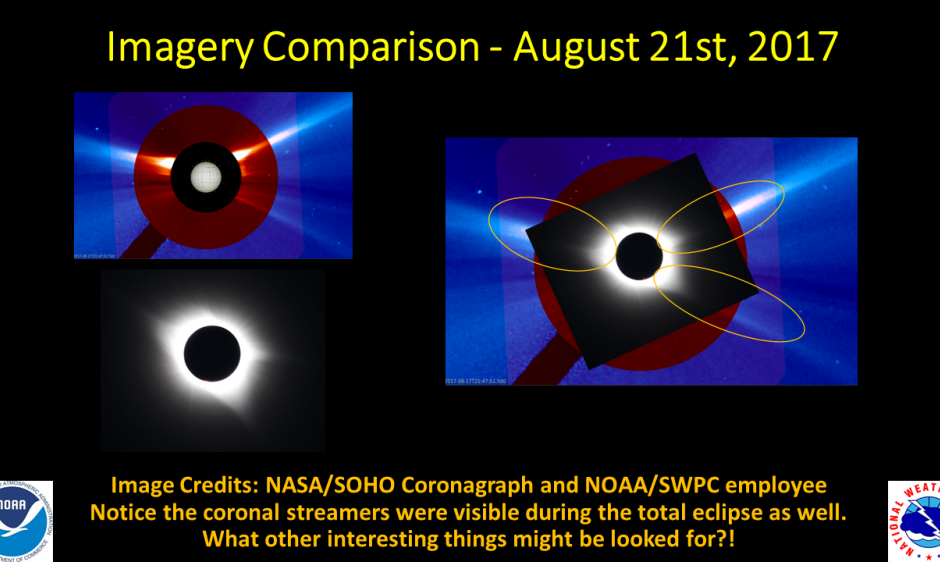
The total solar eclipse will be a great time for science from the backyard. During totality, what will the Sun's corona look like? Might there be a coronal mass ejection departing the Sun? Could there be a massive solar prominence suspended above the solar disk? These are some of the things to look for when the Sun is completely eclipsed by the Moon (the only safe time to look at the eclipse is during totality). The total solar eclipse of 2017 revealed the Sun's corona in all its glory as captured in the NOAA/SWPC employee photograph. When their photo was aligned and compared to the NASA/SOHO coronagraph imagery for the same time (with the help of jhelioviewer), the three coronal streamers evident from the spacecraft 1 million miles from Earth were also visible from the surface of Earth at the same time. Science from the backyard! Enjoy the event everyone and most of all, be safe.